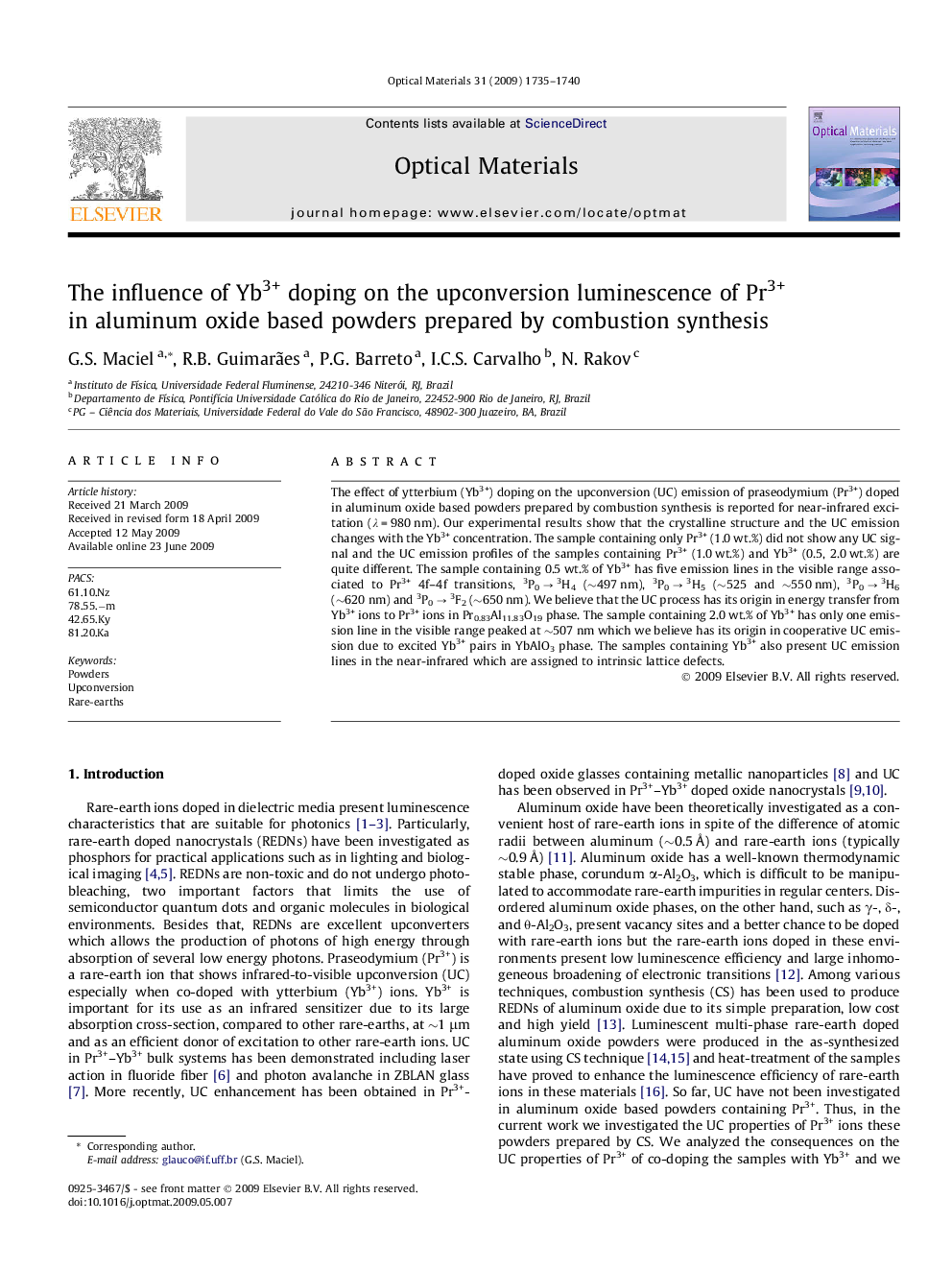| Article ID | Journal | Published Year | Pages | File Type |
|---|---|---|---|---|
| 1496385 | Optical Materials | 2009 | 6 Pages |
The effect of ytterbium (Yb3+) doping on the upconversion (UC) emission of praseodymium (Pr3+) doped in aluminum oxide based powders prepared by combustion synthesis is reported for near-infrared excitation (λ = 980 nm). Our experimental results show that the crystalline structure and the UC emission changes with the Yb3+ concentration. The sample containing only Pr3+ (1.0 wt.%) did not show any UC signal and the UC emission profiles of the samples containing Pr3+ (1.0 wt.%) and Yb3+ (0.5, 2.0 wt.%) are quite different. The sample containing 0.5 wt.% of Yb3+ has five emission lines in the visible range associated to Pr3+ 4f–4f transitions, 3P0 → 3H4 (∼497 nm), 3P0 → 3H5 (∼525 and ∼550 nm), 3P0 → 3H6 (∼620 nm) and 3P0 → 3F2 (∼650 nm). We believe that the UC process has its origin in energy transfer from Yb3+ ions to Pr3+ ions in Pr0.83Al11.83O19 phase. The sample containing 2.0 wt.% of Yb3+ has only one emission line in the visible range peaked at ∼507 nm which we believe has its origin in cooperative UC emission due to excited Yb3+ pairs in YbAlO3 phase. The samples containing Yb3+ also present UC emission lines in the near-infrared which are assigned to intrinsic lattice defects.
